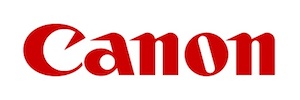Richard Romano: Hi. This is Richard Romano from WhatTheyThink.com and we are here in Atlanta, Georgia, for the Fourth Annual WhatTheyThink Environmental Innovation Awards. And we’re talking with this year’s Thought Leader winner, TC Transcontinental, and we are talking with Donald Simard who is the Corporate Director for MRO Procurement, Energy and the Environment for TC Transcontinental. So thank you very much for being here and congratulations on winning.
Donald Simard: Nice to meet you.
Richard Romano: Now TC Transcontinental is probably one of the best-known printers in North America, but just maybe a little background on the company for those who might not be entirely familiar with you guys.
Donald Simard: TC Transcontinental is a $2 billion company with 10,000 employees. We operate 34 printing facilities from East to West Coast in Canada and US. TC media branch is also present in more than 140 buildings across North America. We are the largest printer in Canada and the fourth in the US. We mainly print recurring high volume printing material for large retailers and publishers, and we also do personalized marketing products.
Richard Romano: And you also have a TC media division that also does non-print stuff?
Donald Simard: Yeah. It’s moderated to a database for a website and the magazine and the content for magazines.
Richard Romano: Now in terms of complying with the various types of environmental legislation that exists in Canada. That exists on sort of a province-by-province basis, and somebody who spans and who has facilities in most of the provinces, how do you sort of coordinate all those efforts when the local legislation tends to vary so much?
Donald Simard: TC Transcontinental is very diversified so it’s not easy to get everyone, everybody on board. Compliance to station legislation to assure to a system of tracking of legislation change using an online updated service and incorporate the program covering our facility with printing operations.
Richard Romano: Now you also have facilities in the United States. Does that sort of add different layers of complexity to sort of coordinating all your various sustainability initiatives?
Donald Simard: It’s not more complicated for a plant in the US. It’s just additional regulation to follow. If I take, for example, the new rule under the CPSIA, it’s more complicated to clarify what is an ordinary book compared to a book for children aged 4 to 12, then what we have to do to comply. Fortunately, we have an organization like Printing of America to help us with this kind of problem, thanks to Gary Jones for that.
Richard Romano: Now you also have a paper purchasing policy. One of the biggest points of controversy I found on the going green blog at WhatTheyThink, is that whenever we talked about chain of certification programs the commenters chimed in and people are very cynical about the process and they don’t always believe that there’s a good way of handling reliable sourcing. So what’s TC Transcontinental’s approach to paper sourcing so that they ensure that it’s reliable?
Donald Simard: It’s important to be able to print applicable logo on A2 paper has to and on the products we produce for our customers. In January 2008, Transcontinental obtained a chain of custody classification for its printing facilities testing the standard of the Forest Stewardship Council (FSC), the Programme for the Endorsement of Forest Certification (PEFC), and Sustainable Forestry Initiative (SFI) for its Canadian and US printing facilities. Each link—each link in that chain was benifited with a chain of custody certificate in order to print the appropriate forestry logo in the printed products, and internal and external audits of our tracking system were performed throughout the year.
Richard Romano: Well, thank you very much for being here and congratulations again.
Donald Simard: Thank you.

 Official camera partner of WhatTheyThink and the drupa daily.
Official camera partner of WhatTheyThink and the drupa daily. 












